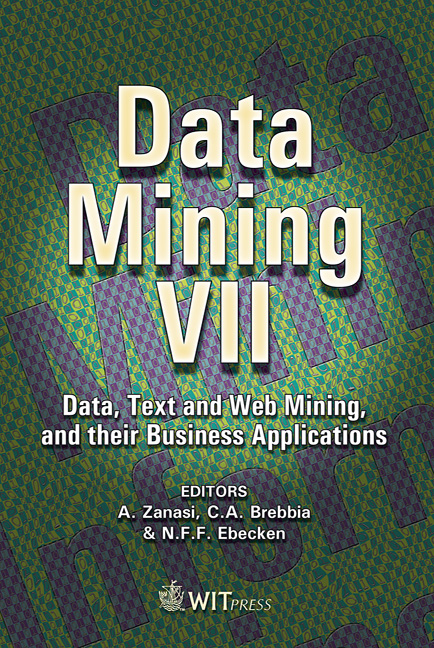Stability Analysis Of Time Series Forecasting With ART Models
Price
Free (open access)
Volume
37
Pages
10
Published
2006
Size
395 kb
Paper DOI
10.2495/DATA060141
Copyright
WIT Press
Author(s)
A. Bocharov, D. Chickering & D. Heckerman
Abstract
Time Series (TS) analysis based on autoregressive tree models has been introduced in Meek et al. (2002). In addition to features present in the original design, the current SQL 2005 implementation also addressed the \“forecasting instability” phenomenon that has been observed on a range of highly non-stationary and/or non-linear data sets. In technical terms the cases of long range forecasting instability are characterized by rapid growth of the mean absolute prediction error with time, which may or may not be accompanied by significant growth of the predicted standard deviation. In practice, the cases of instability where predicted standard deviation stays tame are especially misleading, since they can furnish unreliable predictions with little or no visual cues that would characterize them as unreliable. The method described in this paper is designed to detect and control the long range forecasting instabilities and to cull the unreliable predictions. Keywords: time series, forecasting, autoregression, stability, data mining. 1 Autoregressive tree (ART) models Consider historic time series data for multiple time series. For each target (predictable) series, we build autoregressive tree model, which is effectively a collection of autoregressive models [2] and where the boundaries between the applicable models are defined by binary decision trees (see subsection 2.1 of the research paper [1] for detailed definition and examples of ART models). When underlying decision tree for a target time series Y consists of more than one leaf node, then each of its interior nodes is defined by an input variable V
Keywords
time series, forecasting, autoregression, stability, data mining.





